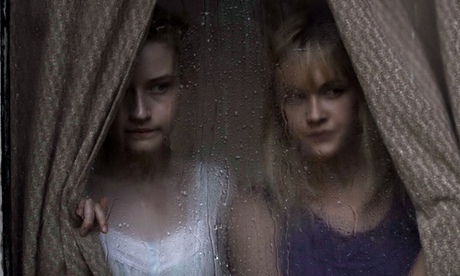
Americanised remakes of "foreign language" horror movies (from The Vanishing to The Ring to Let Me In et al) have tended too often to gut the cultural meat of the originals, leaving nothing more than a saleably glossy reanimated husk. While this English-language "companion piece" to a modern Mexican classic may not rival the fetid air or alarming impact of its source, it makes a firm fist of respectfully reinventing the key themes of Jorge Michel Grau's ravenous gem. The result is an ambitious (if somewhat uneven) slice of downbeat American gothic which interweaves grim melancholia with pointed satire, doomy portent and moments of gnawing revulsion.
Relocating the grim action of 2010's Somos lo que hay from the teeming, hot suburbs of Mexico City to remote sodden backwoods of the Catskills, this third feature from the team behind Stake Land centres on the Parker family, an insular clan for whom blood runs thicker than water, and the clocks appear to have long stood still. Following the unnatural death of their mother in the opening act (a sorry demise which sets the tone for what is to come), it's left to the daughters to take over the sacrificial duties upon which their brood has fed for generations. But with an ailing patriarch (Bill Sage, impressively imposing) vacillating between grief for his lost wife and anger toward his dawningly independent offspring, will the cursed circle finally be broken?
From the gut-munching gore of Ruggero Deodato's Cannibal Holocaust to the arthouse scandal of Peter Greenaway's The Cook, the Thief, His Wife & Her Lover, eating human flesh has remained a staple of taboo-breaking cinema – both low and high. Yet while Grau's edgy nightmare was misleadingly marketed on DVD as "a cannibal gorefest" (a description as off-putting as it was inaccurate), it owed more tonally to Jaime Rosales's deadpan Spanish serial-killer drama The Hours of the Day than to Tobe Hooper's The Texas Chain Saw Massacre, with which it shared its central dysfunctional family riff. Writer-director Jim Mickle and co-writer Nick Damici similarly hold back on the splatter (at least at first), sinking their teeth instead into the film's central themes of family strife and twisted religion, the latter lending a socio-political edge to the horror.
While Grau's movie dealt with urban alienation, We Are What We Are more closely mirrors the anxieties of Kevin Smith's Red State (with which it shares co-star Michael Parks), playing upon fears of a fundamentalist madness which "convinces people to kill one another and not feel guilty about it". The Parkers may have replaced the Good Book with a cookbook which has become their bible, but with their "Lamb's Day" celebrations they remain recognisable relations of those real-life monsters whose zealously deranged opinions are a staple of news headlines and radio talk shows the world over.
There's also a passing whiff of Park Chan-wook's Stoker in the depiction of somewhat ethereal teenage girls on the brink of empowerment, forced to choose between personal goals and family ties with bond-shattering results. Reversing the gender power structure of the source (in which the father's death leaves his sons to take the reins), Mickle and Damici follow a matriarchal thread with intriguingly subversive results. Hats off to Ambyr Childers and Julia Garner (the latter of whom earned her creepy cult spurs in Electrick Children and Martha Marcy May Marlene), both rising to the morbid challenges of their respective roles without straying into Addams Family cliches. Even when the narrative tips over into more generic exploitation, Childers and Garner keep our sympathies engaged, their desire to "be normal" proving unexpectedly heartbreaking amid the spiralling carnage. Good, too, to see Kelly McGillis making her mark, following her role in Stake Land with a ripe turn as the Parker's overly solicitous neighbour who nevertheless has no idea of the horror unfolding next door.
With its chilly palette (blue-grey really is the warmest colour in a world where not even the blood is profondo rosso) and incessant, bone-aching rain, We Are What We Are paints a visually unforgiving picture: cruel, relentless, occasionally plain miserable. Ryan Samul's shimmering cinematography perfectly captures the drenched exteriors and isolated interiors, light refracted through water and glass, everything observed as if through a veil of tears.
Only the flashback sequences jar, with stagey 18th-century explanations of the contemporary chaos proving both hamfisted and unnecessary. One of the strongest elements of Grau's original was the studied absence of "backstory", a factor which heightened rather than undercut the unease and cranked up the craziness. Although it's easy to see why film-makers wanting to forge their own path would be tempted to fill in the blanks, these scenes merely drag us toward the perilous waters of gory camp, providing some of the film's most faltering missteps.
Flawed, then, but laudable nonetheless – and worthy of an extra cheer for having the wit and chutzpah to close to the strains of Tommy Strange singing It Was Me that Made Her Bad.

